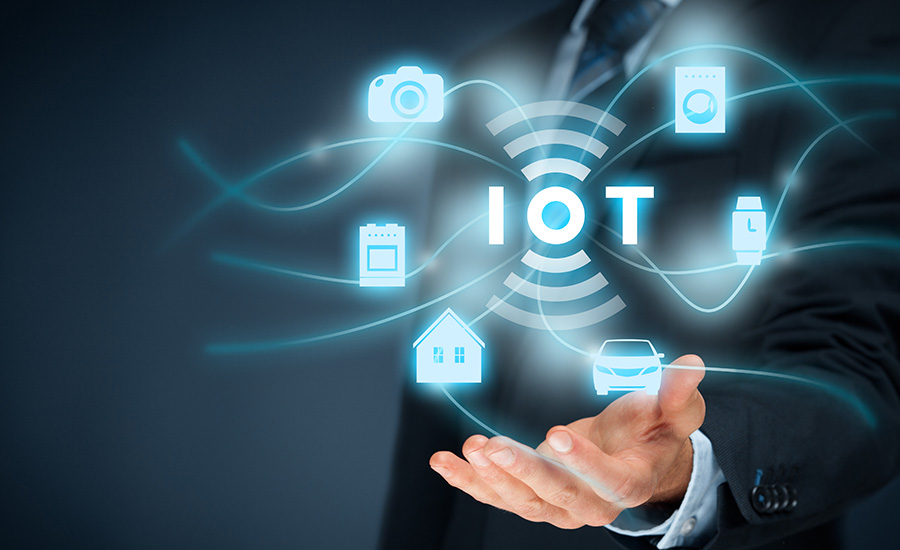In recent years, the integration of environmental monitoring IoT devices has revolutionized the way we perceive and interact with our environment. These smart devices have become essential tools for exporters and importers, enabling them to ensure optimal conditions for their goods in transit. The rapid advancements in IoT technology have not only made environmental monitoring more accessible but also more efficient and accurate.

What Are Environmental Monitoring IoT Devices?
Environmental monitoring IoT devices are smart gadgets equipped with sensors that collect and transmit data regarding environmental conditions. These devices are capable of measuring parameters such as temperature, humidity, air quality, and more. The data collected is then transmitted to a centralized system where it can be analyzed and interpreted. This allows businesses, especially those involved in exporting and importing, to take proactive measures to protect their goods and ensure compliance with international standards.
Key Features of IoT Environmental Monitoring Devices
- Real-time Data Collection: Devices continuously collect data, offering real-time insights into environmental conditions.
- Remote Monitoring: Users can access data from anywhere, ensuring constant awareness of environmental changes.
- Data Analytics and Reporting: Advanced analytics tools help interpret data, providing actionable insights.
- Scalability: Easily scalable to accommodate increasing monitoring needs as business operations grow.
Benefits of Using Environmental Monitoring IoT Devices
The advantages of incorporating environmental monitoring IoT devices into your operations are numerous. First, they provide enhanced monitoring capabilities, allowing businesses to ensure the quality and safety of their products throughout the supply chain. Additionally, these devices offer significant cost savings by reducing spoilage and waste. For instance, a business can prevent significant losses by monitoring temperature-sensitive goods in real-time and making necessary adjustments promptly.
Optimizing Supply Chains
For exporters and importers, maintaining the integrity of products during transit is crucial. Logistics Tracking IoT devices ensure that goods remain in optimal conditions, reducing the risk of spoilage and ensuring compliance with regulatory standards. This, in turn, enhances customer satisfaction and strengthens business relationships.
Challenges in Implementing IoT Devices
While the benefits of IoT devices are clear, there are several challenges that businesses may face during implementation. One of the primary concerns is data privacy and security. With the increasing amount of data being collected and transmitted, ensuring that this data is protected from unauthorized access is critical.
Another challenge is the Interoperability of different IoT devices. Businesses often use a variety of devices from different manufacturers, and ensuring that these devices can communicate with each other seamlessly is essential for effective monitoring.
Addressing Security Concerns
To mitigate security risks, businesses should invest in robust security protocols and regular system updates. Implementing secure authentication methods and data encryption can help protect sensitive information from potential breaches. Additionally, businesses should consider working with reputable IoT service providers who prioritize security in their offerings.
The Future of Environmental Monitoring IoT Devices
The future of environmental monitoring IoT devices looks promising. With continuous advancements in technology, these devices are becoming more sophisticated and efficient. Emerging technologies such as artificial intelligence and machine learning are being integrated into IoT devices, enabling more accurate predictions and insights.
Moreover, as the demand for sustainable practices grows, IoT devices will play a crucial role in promoting environmental responsibility. By providing detailed insights into environmental conditions, businesses can make informed decisions that align with their sustainability goals.
Innovations on the Horizon
Innovations in IoT technology are set to transform the landscape of environmental monitoring. As devices become more affordable and accessible, more businesses will likely adopt them, further driving innovation and development in the industry. The integration of AI and IoT is set to enhance the predictive capabilities of these devices, allowing businesses to anticipate environmental changes and adapt accordingly.
Conclusion
In conclusion, environmental monitoring IoT devices are indispensable tools for exporters and importers. They offer numerous benefits, including enhanced monitoring capabilities, cost savings, and improved supply chain optimization. While there are challenges associated with their implementation, the potential rewards far outweigh the risks. As technology continues to evolve, these devices will undoubtedly play an increasingly critical role in shaping the future of environmental monitoring and sustainability.

FAQs
What are environmental monitoring IoT devices?
Environmental monitoring IoT devices are smart gadgets that collect and transmit data about environmental conditions such as temperature, humidity, and air quality.
How do IoT devices benefit exporters and importers?
These devices help ensure that goods remain in optimal conditions during transit, reducing spoilage and ensuring regulatory compliance. This leads to cost savings and improved customer satisfaction.
What are the challenges of implementing IoT devices?
Challenges include data privacy and security concerns, as well as interoperability issues when using devices from different manufacturers. Addressing these challenges requires robust security measures and ensuring device compatibility.
What is the future of environmental monitoring IoT devices?
The future looks promising with advancements in AI and machine learning, leading to more sophisticated and efficient devices that promote sustainability and innovation in environmental monitoring.
For more insights on IoT product development, you can visit IoT Product Development.


